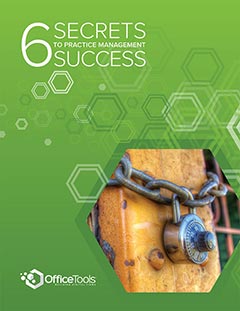
How to Handle a New Accounting Practice Management System Implementation at Your Firm
Your accounting firm has a lot to gain by gleaning insights from the latest trends made visible by implementing new technology systems at the right time. New processes are able to streamline workflows, while intelligent IT systems helps firms communicate effectively and grow dynamically. And let’s not forget how technology systems are equipped to safeguard sensitive data and enable remote work. But how do you handle a new accounting practice management system implementation? Does your firm give the software change management process the attention it deserves?
How to Implement a New Software System
Change management refers to the processes and techniques firms use to help employees change their day-to-day habits during a new accounting practice management system implementation. Introducing any new system – i.e. changing how your staff works – requires a careful and systematic software change management process that considers the human side of the change in addition to the roll-out strategy. It’s important and sensitive work that involves understanding employee hesitation and managing adoption to achieve the desired business outcomes.
Different Employee Reactions to Implementing New Technology Systems
The software change management process directly impacts ROI
Let’s examine how a technological or operational change affects employees. Not everyone’s an innovator or an early adopter; many people are skeptical about or afraid of implementing new technology systems, especially if there’s a learning curve. It’s up to firms to show employees the positive impact new it systems will have, and how they will address any upcoming concerns.
The extent to which your people embrace change determines how much ROI you’ll see on your new accounting practice management system implementation. An effective software change management process increases the likelihood of success. In fact, a study by Prosci revealed “projects with excellent change management were six times more likely to meet objectives than those with poor change management.” There’s also a direct correlation between effective change management and staying on track in terms of schedule and budget.
 The ability to successfully handle change management is just one aspect of a strong firm. Download our free guide, 6 Secrets to Practice Management Success, for more tips on how to run a successful firm.
The ability to successfully handle change management is just one aspect of a strong firm. Download our free guide, 6 Secrets to Practice Management Success, for more tips on how to run a successful firm.
How to Avoid Accounting Practice Management Implementation Pitfalls
Not putting enough thought into your software change management process can have costly consequences on your new accounting practice management implementation. For one, productivity may suffer, slowing or stopping progress on critical operations. Additionally, clients could end up being negatively impacted by a change they shouldn’t have been privy to in the first place. Furthermore, morale could deteriorate internally. If some employees accept the change and others don’t, you could inadvertently create a “them” versus “us” culture, which leads to stress and confusion.
Ensuring a successful IT system implementation
No firm wants to face any of these unfavorable software implementation outcomes. Here are some ways to avoid them, support your staff, and help your firm start implementing new accounting technologies and systems successfully:
1. Get backing from others.
Gaining buy-in from key stakeholders plays a huge part in a successful new accounting software implementation. Harvard Business School Professor John Kotter discusses this in his book Buy-In. “Buy-in is critical to making any large organizational change happen. Unless you win support for your ideas, from people at all levels of your organization, big ideas never seem to take hold or have the impact you want.” To expand on that idea, real buy-in involves at least some element of co-creation. When firm leaders want to make a change, they should encourage dialogue so stakeholders feel empowered by the results. Frame ideas as “drafts”, ask for others’ opinions about them, and incorporate good feedback into changes. Communicate with stakeholders at every step, and you’ll have a good chance of achieving your goal. Another idea is to assemble a technology and systems committee that consists of team members from different departments and various levels within the firm. Create buy-in with that team and let them advocate for the change. This will send a message that decisions and changes aren’t just top-down.
2. Understand and acknowledge where your staff is coming from.
Once you’ve announced your decision to more forward with a new technology implementation, you’ll experience your staff’s reactions. While many of your employees will agree with you, some of them will have a hard time adopting the new accounting software system. Find out what their concerns are and address them by presenting data about how the new system’s helped other firms. Remember, you need to prepare your firm for change, manage the change, and reinforce the change.
3. Communicate with your staff.
Announce the new system and roll-out schedule in your next staff meeting. Walk your employees through the need for the change and give an overview of any new tools, including what they do, how they work, and who will be impacted by them. Discussing these things will warm your staff up and will increase the adoption rate.
4. Choose someone to champion the tool.
If you’re implementing new technology, empower one of your most organized employees to “own” it. This person will act as a resource for your staff during the onboarding and training processes and be the liaison between your firm and the tech’s representative. Select someone from the technology and systems committee mentioned above.
5. Execute a solid roll-out plan.
Once you’ve introduced the system and enabled your staff to use it, mandate firmwide practice management software trainings. Accommodate different learning styles – including visual, auditory, kinesthetic, and reading/writing – in your methods to maximize retention and the value of your trainings. If you’re introducing new tech, make sure you explain the tool’s best features and create a public channel for FAQ’s. Provide support every step of the way.
6. Track your progress.
Investing so much time, energy, and money in a new accounting practice management system implementation isn’t worth anything if you don’t measure the impact it has on your firm. Set goals for what you hope to accomplish with it based on industry benchmarks, take note of improvements, and adjust the goals periodically.
Implementing a new system in your firm takes a lot of work, but pays off if it revamps your processes, enhances your client relationships, or increases productivity. With a smooth rollout informed by change management, the right solution will make a noticeable difference in your firm’s performance and provide quick ROI.
OfficeTools Makes New IT System Implementation Easy
If you’re an accountant and are interested in learning more about OfficeTools accounting practice management software — you can sign up for a free demo of OfficeTools Cloud or get a free demo of OfficeTools Workspace. If you need help figuring out what the best solution is for your firm, give us a call at 858-882-4879, or contact us online today.